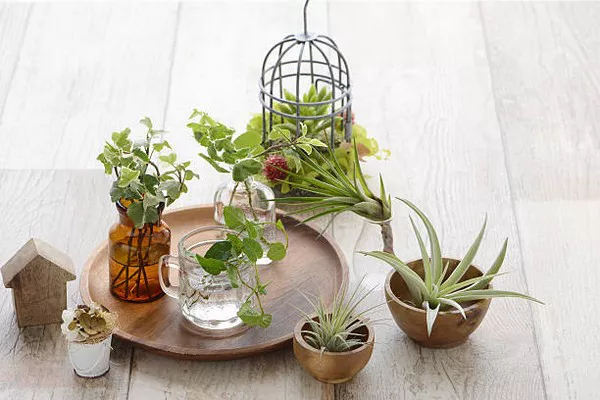Air plants, scientifically known as Tillandsia, have garnered significant attention for their unique growth habits and minimal care requirements. These epiphytic plants, which originate from diverse ecosystems such as rainforests, deserts, and mountains, have captivated the interest of both novice and experienced gardeners. One common question that arises is, “How long do air plants take to grow?” The growth timeline of air plants is indeed a fascinating journey that requires patience and understanding.
Variability in Growth Rates
Before delving into the specifics of the growth timeline, it’s crucial to recognize the variability in growth rates among different species of air plants. Air plants exhibit a wide range of growth patterns due to their diverse natural habitats and genetic makeup. Some species tend to be more rapid growers, while others take a more leisurely approach. Factors such as the availability of light, moisture, nutrients, and the overall health of the plant can also influence growth rates.
Germination and Early Growth
The growth timeline of air plants begins with germination, a process that can take anywhere from a few days to several weeks. During this stage, air plants rely on a host surface to anchor themselves and absorb nutrients and moisture from the air. Once germination is successful, the initial growth period involves the development of a small rosette of leaves called a “pup.” These pups emerge from the base of the parent plant and gradually develop their own root systems.
Establishing a Strong Foundation
The first few months of an air plant’s life are dedicated to establishing a robust foundation. During this period, the pup’s roots develop and grow, allowing it to anchor securely to its host surface. The rate of root growth can vary, with some air plants producing longer roots more quickly than others. It’s important to provide adequate moisture and indirect light during this phase to support healthy root development.
Leaf Growth and Pup Multiplication
As the air plant matures, it begins to focus on leaf growth and pup multiplication. Leaf growth is a continuous process throughout the plant’s life, contributing to its overall size and appearance. Pup multiplication is a remarkable aspect of air plant growth, where the original plant produces new offshoots or pups. These pups can take several months to reach a size where they can be separated from the parent plant and mounted on their own.
Factors Influencing Growth Rates
Several external factors play a crucial role in determining the growth rates of air plants. These factors are important to consider when assessing the timeline for an air plant’s development:
1.Light Exposure: Adequate light exposure is essential for healthy growth. Air plants thrive in bright, indirect light conditions. Insufficient light can lead to slow growth and elongated, weak leaves.
2. Moisture and Humidity: Air plants absorb moisture and nutrients from the surrounding environment through their leaves. Regular misting or soaking is necessary to maintain their hydration. Humidity levels also affect growth; higher humidity often results in more rapid growth.
3. Nutrition: While air plants don’t require soil, they still need nutrients to thrive. Regularly fertilizing with a diluted, balanced fertilizer can support healthier and faster growth.
4. Temperature: Air plants are adaptable to a range of temperatures, but rapid growth is generally observed when they are kept within a temperature range of 50 to 90 degrees Fahrenheit (10 to 32 degrees Celsius).
5. Air Circulation: Good air circulation prevents the accumulation of excess moisture, which can lead to rot. Proper airflow ensures the health of the plant’s leaves and roots.
6. Plant Health: A healthy air plant is more likely to grow at an optimal rate. Regularly inspect for signs of pests or diseases, and address any issues promptly.
Long-Term Growth and Maturation
The growth journey of an air plant extends beyond its initial stages. With proper care, these plants can continue to thrive and mature for several years. Over time, the plant’s central rosette may produce an impressive flower spike. This spike, which can vary in color and appearance among different species, marks a significant milestone in the plant’s life cycle. After flowering, the original plant will slowly begin to decline, but by this point, it would have likely produced several pups that can carry on its legacy.
Conclusion
The growth timeline of air plants is a testament to the beauty of nature’s intricate processes. From germination and root development to leaf growth and pup multiplication, each stage contributes to the plant’s unique character and charm. While it’s natural to desire quick results, air plant enthusiasts quickly learn that patience is a virtue in the world of horticulture.
Understanding the variability in growth rates and the importance of external factors such as light, moisture, nutrition, temperature, and air circulation empowers enthusiasts to provide the best possible environment for their air plants to flourish. Whether you’re a newcomer to the world of air plants or a seasoned gardener, embracing the journey of these fascinating plants and nurturing them through their growth stages can be a deeply rewarding experience.


